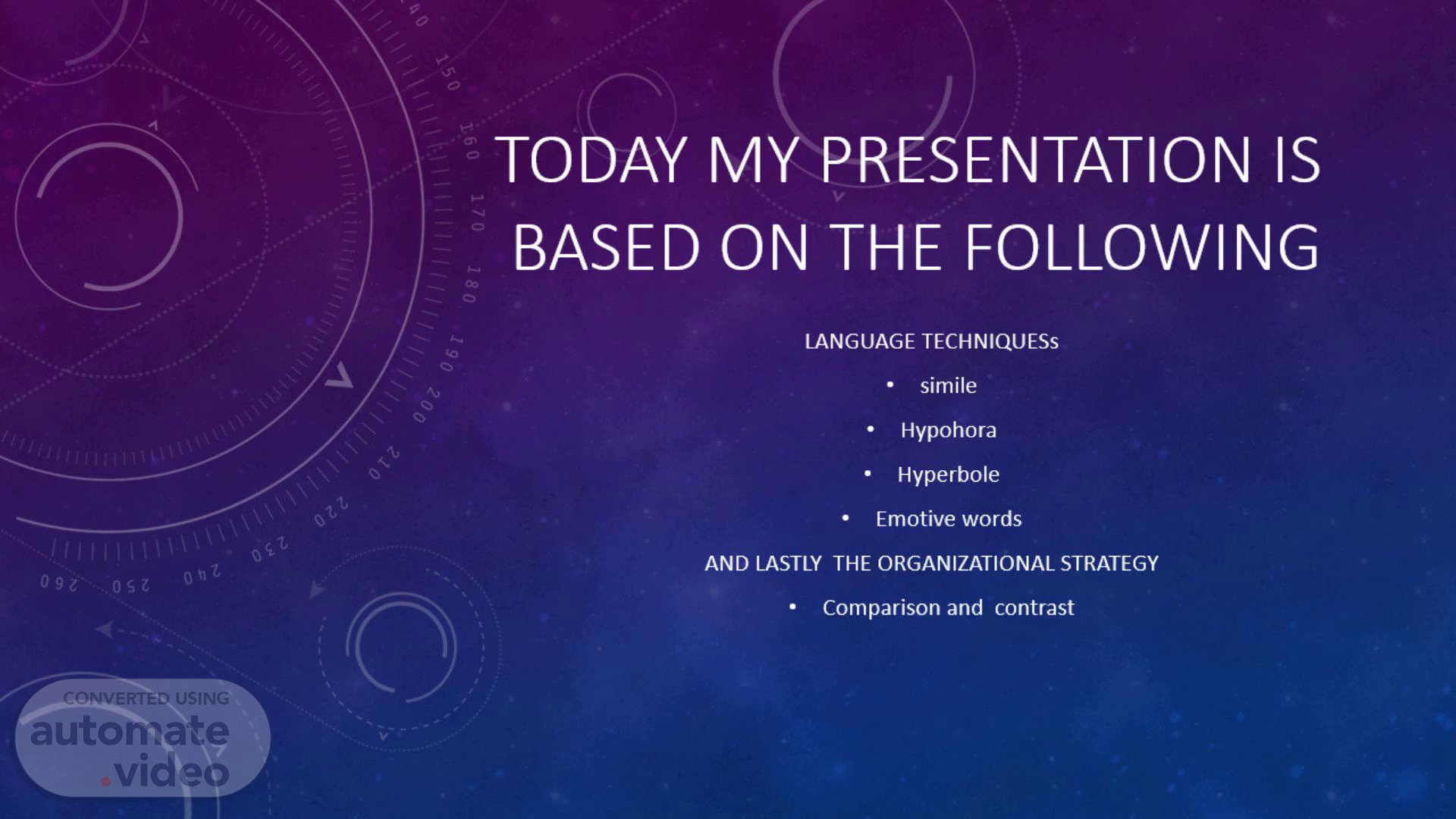
Page 1 (0s)
Today my presentation is based on the following. LANGUAGE TECHNIQUESs simile Hypohora Hyperbole Emotive words AND LASTLY THE ORGANIZATIONAL STRATEGY Comparison and contrast.
Page 2 (10s)
Simile. WHAT IS A SIMILE?? A simile is a figure of speech that draws a comparison between two distinct words, emphasizing their similarities by using the words “like” or “as.” This literary device serves to enhance descriptions, create vivid imagery, and evoke a more relatable understanding of the subject being portrayed..
Page 3 (26s)
Examples of similies. 1. Brave as a lion 2. Swift as a deer 3.Quiet as a mouse 4. Busy as a bee 5. Bright as the sun 6. Free as a bird 7. Happy as a clam 8. Cold as ice 9. Strong as an ox 10. Clear as crystal.
Page 4 (41s)
Hypohora. What is hypohora ??? Hypophora is a rhetorical device where a speaker poses a question and then immediately provides an answer. It is used to engage the audience, anticipate their inquiries, and effectively convey information..
Page 5 (53s)
Examples of Hypohora. 1. Question: “Wonder why kindness matters?” Answer: “Kindness creates ripples of positivity, making the world a brighter place.” 2. Question: “Curious about the secret to time management?” Answer: “Effective time management empowers productivity and reduces stress.”.
Page 6 (1m 9s)
Hyperbole. What is Hyperbole?? Hyperbole is a literary and rhetorical device that involves extreme exaggeration to emphasize a point, evoke strong emotions, or create a dramatic effect. It stretches the truth beyond reality but is not intended to be taken literally. Hyperbole adds intensity and vividness to language, making expressions more memorable and impactful..
Page 7 (1m 26s)
Examples of Hyperbole. 1. Example: “I’ve told you a million times to clean your room!” 2. Example: “This suitcase weighs a ton!” 3. Example: “I’m so hungry I could eat a horse!” 4. Example: “She’s as old as the hills.” 5. Example: “I’ve been waiting forever for this moment!”.
Page 8 (1m 43s)
Emotive words. What are Emotive words Emotive words, also known as emotional words, are terms or phrases that carry a strong emotional impact. These words are chosen to evoke specific feelings or reactions in the reader or listener, influencing the emotional tone of a message, piece of writing, or conversation. Emotive words can intensify the emotional resonance of expressions, making communication more compelling and relatable..
Page 9 (2m 2s)
Examples of Emotive words. Happy Sad Humble Better Disheartened Joyful.
Page 10 (2m 10s)
Organizational strategies. Comparison. Comparison is the process of examining similarities and differences between two or more things for analysis and understanding. Examples: Comparing apples and oranges, you notice that both are fruits, but apples are typically sweeter, while oranges have a citrusy taste..
Page 11 (2m 35s)
Whats the Difference between contrast and comparison.
Page 12 (2m 54s)
The end…….